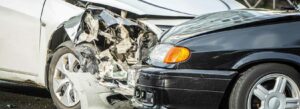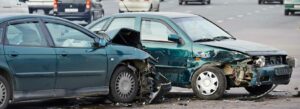In most auto-pedestrian accidents, the driver is always at fault for the collision. Hence, going by the Georgia fault system, the driver pays compensation to the pedestrian. The settlement would often cover economic and non-economic damages. If there is a lawsuit and proof of gross misconduct, the driver will pay punitive damages.
However, there are instances where the fault might not be that of the vehicle driver. In this article, our Georgia car accident lawyers provide insight on whether a non-driver can be liable for an accident. We’ll also look at when they can be wholly or partially responsible.
How Can a Pedestrian Cause an Auto-Pedestrian Accident?
There is a universal misconception that a pedestrian always has the “right of way.” This assumption is why many believe that a non-driver cannot be at fault for an accident. But that’s not always the case. Below are instances when a pedestrian can cause a traffic accident.
- Jaywalking (walking or crossing outside a designated area on the roadway)
- Entering a crosswalk when the traffic signals say to wait
- Intentionally trying to distract a driver (this is rare)
- Wearing dark clothing when walking or crossing the road at night, especially in an unlit area
- Suddenly darting into the street to retrieve an item without heeding traffic
- Failing to look left-right-left before crossing the roadway
- Intentionally or negligently throwing things into the road or the travel lane
- Walking on the street when intoxicated or trying to cross when intoxicated
Note that both non-drivers and drivers have a duty of care to uphold. Both have to exercise “reasonable care” when on the road for the safety of those around them. What amounts to standard care often involves obeying the road’s rules and behaving as a prudent person would under the same circumstances. A non-driver who fails to do this would be liable for the auto-pedestrian accident, vice-versa.
How to Prove Fault in a Pedestrian Accident
As already established, both drivers and pedestrians can be at fault for an accident. Thus, for example, a driver who fails to stop at a designated crosswalk when pedestrians have the right of way is liable for any resulting collision. This follows the rules of the doctrine of negligence.
Thus, in auto-pedestrian accidents, the person who acted negligently is the fault party. In proving fault, you would have to prove the four elements of negligence like in all personal injury claims. It means you will show a duty of care, breach of duty, that the violation caused an injury, and the injury resulted in damages.
Thus, a pedestrian who jaywalks at night wearing dark clothes breaches the duty to maintain reasonable care on the road. If in that state an accident occurs, they are liable to pay damages to the vehicle driver for any injury they suffered. The only setback in claiming damages is that most auto-pedestrian accidents are fatal or severely harmful for the pedestrian. This is because the pedestrian lacks the covering cars affords its occupants in the event of a collision.
What Happens if a Pedestrian is 100% at Fault?
If evidence from the crash scene shows the non-driver is entirely at fault for the accident, they will pay for their injury treatment. It simply means that they will turn to their insurance carrier for recovery. A pedestrian can do the preceding if they have personal injury protection (PIP) coverage. Unfortunately, PIP is not a compulsory policy, so most people fail to buy it.
Thus, if the non-driver lacks a PIP, they need to turn to their health insurance and disability insurance for recovery. If the driver suffered any injury or property damage, they have two options for compensation. One is filing an insurance claim against the non-driver or filing a personal injury lawsuit.
Furthermore, there are instances where the non-driver will not be entirely at fault for the auto-pedestrian accident. An example is where the non-driver jaywalks, but the vehicle driver was distracted while driving. Here, Georgia’s doctrine of modified comparative negligence rule comes into play.
If the pedestrian is less than 50% at fault, they can bring a claim against the driver to recover damages. The amount they recover would be subjected to the percentage of fault they bear. Our Georgia car accident lawyers can provide more information on this.
Get Expert Representation From Our Experienced Lawyers
Car accidents can complicate a person’s life in more ways than one. This is why you need help from our experienced Georgia car accident lawyers at Calvin Smith Law. We will look at the facts of the case and create a workable plan to get you the maximum compensation. Contact us today for a free case review.









